


From Bulguksa, it is 3km by ridge, The structure of Seokguram is a combination of square and circular, straight and curved, flat and spherical. In particular, the 38 bodies carved around the wall are all the masterpiece, and it shows a high degree of philosophy and scientific aspect through overall harmony. In the center, There is the Buddhist statue which is made of white granite and it is overlooking the East Sea. The gaze overlooking the Buddhist statue headed to in front of Bongil-ri, the royal underwater tomb of King Munmu. In 1995, Sukgulam is officially designated as a UNESCO World Heritage Site along with Jongmyo and Haeinsa Temple.

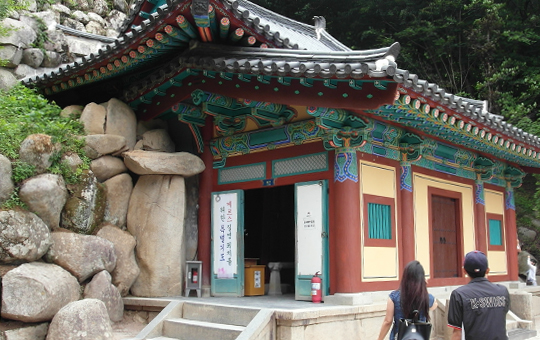
User guide

Source : http://korean.visitkorea.or.kr (Korea Tourism Organization)

Cheomseongdae, which was built during the reign of Queen Seon-deok of Silla Dynasty, was the oldest and the only stone structure astronomical observatory in the Orient. It is made of granite, 9.17m in height, 3.1m in top diameter, 5.17m in bottom diameter, and 5.35m in length on one side of the stone. The double-walled stone and the base are in the shape of a square, with eight and fifteen sheets of pylon, and on top of it, a cylindrical body of twenty-seven steps, which is wide and narrow and The upper part is vertical. It is estimated that the base stone is about 30 centimeters tall, and there are the top two stones on top of Cheomseongdae, which are presumed to have been placed observer instrument. The 24 seasons were measured through the stars, and the top 2 stones became the standard of the Silla Majors, and they were said to be the standard of defense of north, south, east and west. Cheomseongdae seems to be tilted slightly to the northeast. The stone part of Cheomseongdae is a very rare ruin because it retains its original form and is designated as National Treasure No. 31. Moreover, It is the oldest astronomical observatory in the East and It shows the high scientific level of the time.

User guide

Gyeongsangbuk-do
Tourist Information Center (Gyeongju Station) +82-54-772-3843
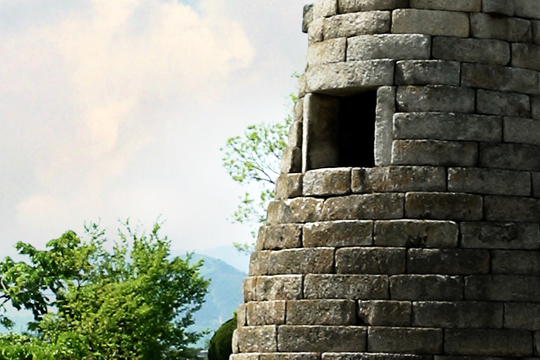
Source : http://korean.visitkorea.or.kr (Korea Tourism Organization)

Gyeongju Donggung Palace and Wolji Pond were the secondary palace site which was used for the palace of the Crown Prince along with other subsidiary buildings and it also was the banquet room for important national event and important visitors. In 931 After the invasion of Gyeong-hun, Silla king Kyeongsun invited Koryo King Taejo Wangan and appealed to the emergency situation and gave a feast in Gyeongju Donggung Palace and Wolji Pond. After unifying the Three Kingdoms, Silla dug a large pond in the 14th year of King Munmu (674). In the middle of the pond, three islands were made and the mountain of 12 peaks was made at the northeastern side of the pond, and it is said that in this place, there were beautiful flowers and trees and rare birds and animals. In the "Samguksagi" of the Koryo period, There is no mention of Anapji. After Silla fell to ruins and came to Goryeo and Chosun, some poets watched the pond and uttered the poem 'gorgeous palace is gone, and only the goose and the duck fly' through this poem, Wolji Pond is called as Anapji which means goose and duck.

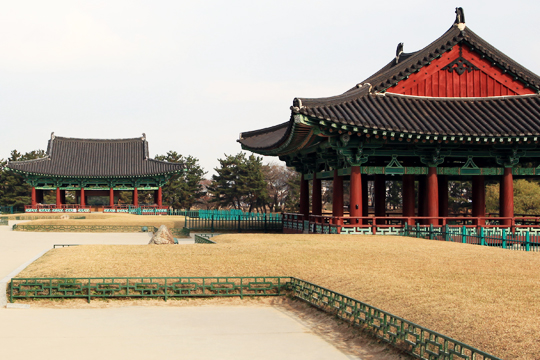
User guide

Source : http://korean.visitkorea.or.kr (Korea Tourism Organization)

Bulguksa Temple and Seokguram which are located at the middle of Tohamsan mountain are the core of Shilla Buddhist culture. In the 22nd year of King Bubheung of the Shilla Dynasty, It was built for the stability of the country and the peace of the people. After that, Kim Dae-sung rebuilt in the reign of King Gyeongduk (742-764) of Silla and renewed the aspect of the temple. However, After Japanese Invasion of Korea, the building and precious treasures were almost burned or plundered. Prior to 1920, some buildings and towers remained in ruins, but with continuous repair and maintenance, Bulguksa Temple retained a national treasure of 7 and it is equipped with the appearance of a large temple. If you climb about 3km (9km from Pavement Grotto) on the ridge of Bulguksa Temple, you can see the Seokguram where Buddhist statue is overlooking the East Sea. In 1995, Bulguksa Temple is officially designated as a UNESCO World Heritage Site along with Jongmyo and Haeinsa Temple. Moreover, Bulguksa's reputation grew even higher.
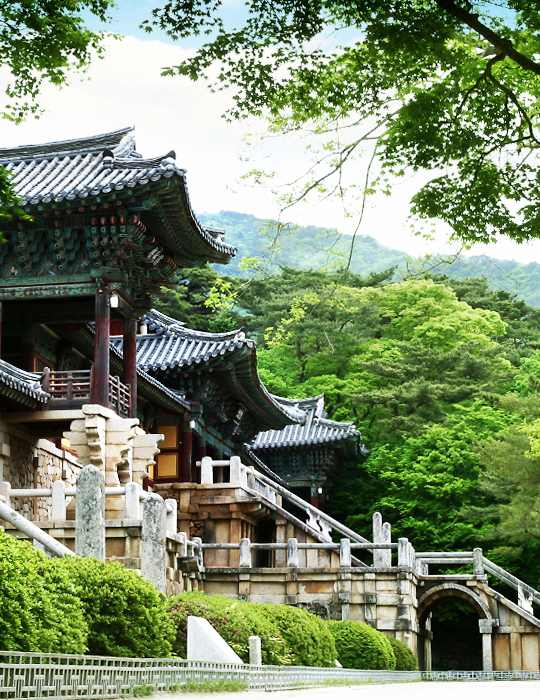
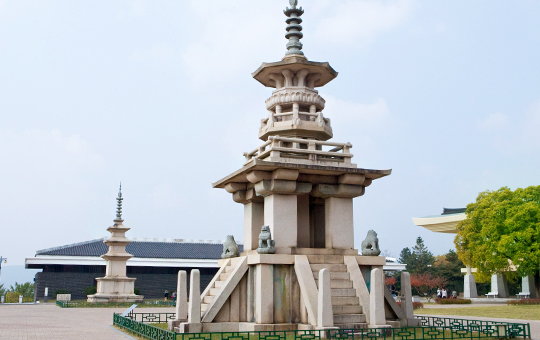
User guide

Temple stay +82-54-746-0983
Nov-Jan 07:30-17:00 / Feb 07:30-17:30
Source : http://korean.visitkorea.or.kr (Korea Tourism Organization)
